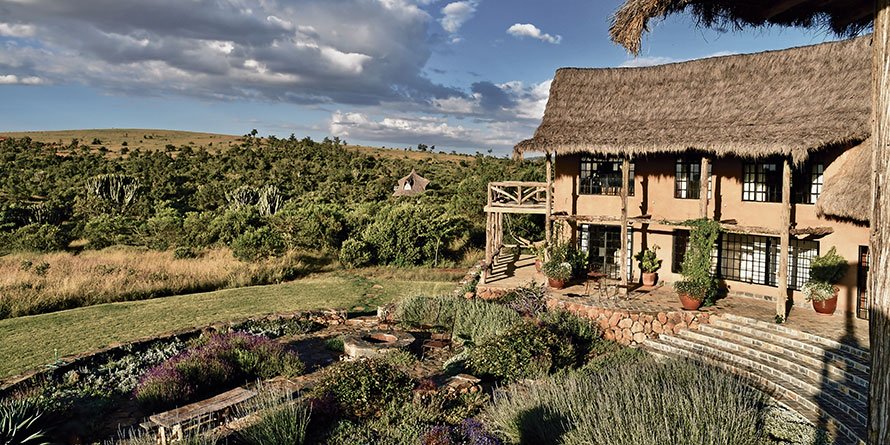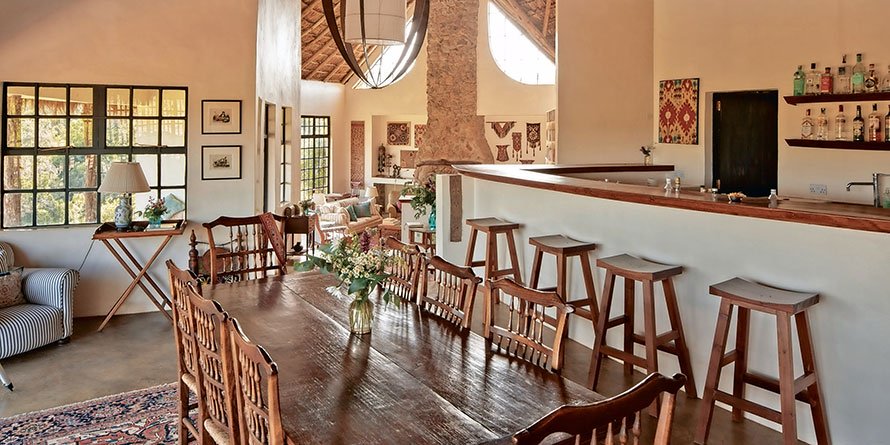Design & Interiors
‘How we built Sh140,000 a day lodge’
Saturday, March 21, 2020 12:11
By GITONGA MARETE

When Elizabeth Loker and her late husband bought land in an arid area in Laikipia in 2010, they set off on a journey to rehabilitate it, taking 10 years of patience and planting of over 4,500 trees at the expansive farm where they also do managed grazing.
“The land was dry and overgrazed and in bad shape so when we decided to invest in an eco-lodge we started from scratch. We brought in water through community schemes, built rain water harvesting facilities and installed solar electricity. It takes a lot of hard work, dedication to beauty and sustainability. Initially, the road didn’t exist but members of the community supported in providing access,” Elizabeth says.
Today, the allure of Olepangi Farm located seven kilometres off Timau, is drawing dozens of visitors for a taste of natural food, fresh air and scenic views of Mount Kenya.
The rough road takes you through farmlands and a forest over a hill and a steep slope they call a “canyon” which is easily scaled using a 4×4 vehicle.

“The road is still bad but visitors keep coming. They love the serenity, our organic food and tours that we organise to various attractions,” Elizabeth says, as she welcomes us for a tour of the 125-acre farm, most of which is forested.
From inside the cottage perched on a rocky hill, you can see the stream below snake its way downstream, and enjoy the soothing sound of waters swashing on the banks.
At dawn or dusk, sun rays paint gold the ridge on the opposite side, which opens to the snow-capped Mount Kenya in the background.
A panoramic view of the greenery in the forest in the foreground completes the painting of the scenic Mt Kenya National Park viewed from the comfort of the rooms.
The organic garden hosts greenhouses where seeds are germinated; various species of vegetables that make dishes on the dining table; a host of flowers whose scent permeates from vases inside the cottages and Friesian cows that will soon be supplying milk to this facility.
The property has five cottages in the main lodge while there is the flagship Olepangi House which has three bedrooms and can be booked either on self-catering or full board.
Accommodation at the Olepangi House which can be shared by a family of up to six goes for Sh140,000 per day. However, children under the age of 10 years are not allowed, with honeymooners staying for up to six weeks.
In one of the cottages, Elizabeth fondly talks about a Bombay bed which she says is one of the most valuable assets in the property, part of a family collection spanning decades. From beds to tables, chairs and lamp holders, the furniture at Olepangi is a collection of antiques, taking one on a journey to six continents.
“Everything you see here was collected during our travels, with my late husband (he passed on in December last year) who had visited over 100 countries while I have been to 93 countries. Every time we travelled we carried something and brought it home,” Elizabeth says.

A look at the dining and bar area which also has a library tells not only of this story but also of a unique structural design, based on what in architecture is called biophilia— how humans relate to built environment.
Biophilic design is an approach to architecture that seeks to connect people closely to nature.
“It is a concept that builds on the fact that we evolved from being hunter-gatherers where we lived in caves. We were perched up on cliffs overlooking a valley so that we could see enemies coming,” Elizabeth breaks into an infectious laughter and goes on:
“Our speciality is communal meals where guests come to the bar and tell stories of their childhood that we spice with old school entertainment; they love it. Some guests like sitting in the bar and listening to the sound of water flowing downstream.”
She says Kenyans have embraced eco-tourism, which is also now popular with the middle class.
“Kenyans’ interest in nature, wildlife and open spaces is growing. When Kenyan guests come to the farm they relive their childhood and are interested in a more outdoor, nature-based life and in old age, they want to give up city life,” she says.

Olepangi Farm has won top awards from TripAdvisor —the world’s largest travel platform. This backdrop has captured the imagination of artists who stay at the hotel on working holidays to tap into inspiration from the natural environment: renown Finish photographer Tarja Ruuska and Sydney Spaceship (Australian artist) have been resident artists here.
“There are also visits to neighbouring schools in the community where artists talk to children and teach them the craft as a way of inspiring them as they leave a legacy. We are creating a gallery for display of the artworks where the artists’ experiences will be captured,” says Elizabeth, who is in charge of leadership talent development at the International Business Machines (IBM) in Europe, Middle East and Africa.
The facility has also been visited by a number of distinguished guests, including an International Criminal Court judge.
While lessons on bird watching, horse riding and polo are offered, there are guided tours to the surrounding communities and trips to Ngare Ndare, game drives to Ol Pejeta, Lewa Conservancy and Samburu Reserve among other attractions.
“We are about to complete construction of a swimming pool where there will be a yoga deck. Sunrise and sunsets from this property are magical; as you meditate, you will just need to relax, enjoy the scenery or at night, gaze at the millions of stars and galaxies scattered in the sky,” Elizabeth says.
Credit: Source link